Unraveling the Urgent, Unspoken Struggle for Accessible HIV Prevention
How healthcare inequities and systemic divides leave vulnerable communities behind in the fight for PrEP access.
We're proud to announce that our article — reported in partnership with Fierce Healthcare — has been honored with Best Single Article at the Jesse H. Neal Awards, a National Bronze and Regional Silver in the Impact/Investigative categories from the ASBPE Azbee Awards, and the Trade Journalism Award from the NIHCM Foundation, underscoring the story’s contribution to public understanding of this critical issue.
Twenty-year-old Dorian McCuller sat on his porch in Newport News, Virginia, trying to say “HIV” out loud. “It's really scary. I feel like if I'm too open about it, people will use it as a target.”
Growing up in the South, McCuller felt a lot of stigma about being gay. When he was 13, he came out to his grandmother.
“She said if I am gay, ‘don’t have sex. A demon will crawl up [your] ass,’” McCuller says, adding that at the time he took that to mean he’d contract HIV.
McCuller’s grandmother says she only remembers advising McCuller not to have sex because he was a virgin.
Fast forward to last year, McCuller got the call that he was HIV positive a few days after his 19th birthday. Someone McCuller had hooked up with told him they needed to talk. “I immediately knew it was in the realm of HIV,” he says. “I got tested a few days later.”
In the last 30 years, HIV rates have gone down, in large part because of the game-changing prescription drug pre-exposure prophylaxis (PrEP), which reduces the risk of contracting HIV through sex by 99%.
Since the Federal Drug Administration approved the drug in 2012, more people have started to use it, and HIV rates have steadily decreased. But not everyone is seeing the same results.
From 2019-2022, 94% of white people who could benefit from PrEP were prescribed it, while only 13% of Black and 24% of Latino people were. HIV— which has claimed an estimated 42.3 million lives to date and remains a global public health issue—continues to have a disproportionate impact on people of color, men who have sex with men, and trans women. The lifetime risk of acquiring HIV is still 1 in 3 for Black gay and bisexual men, according to data from the US Centers for Disease Control and Prevention.
Ending the HIV epidemic hinges on both treatment and prevention, particularly through access to PrEP. For at-risk individuals living in the U.S. South—where HIV is a daunting reality—PrEP use is very low compared to the number of new HIV cases.
The South had 53% of new HIV diagnoses in 2022 but represented only 39% of PrEP users in 2023. Regionally, Black people made up 48% of new HIV diagnoses in 2022, but only 22% of PrEP users in 2023. While PrEP is more accessible in metropolitan areas, educational barriers, healthcare costs, and anti-LGBTQ stigma still hinder access, particularly in rural areas and the Bible Belt.
“It felt like a slap in the face,” says McCuller, who is still processing the diagnosis from last year. “It made me a lot more self-conscious as far as self-worth,” he says. “I find myself questioning a lot of myself, and it didn’t really start until I became positive.”
He says that he had never heard of the drug until after he contracted the virus:
“If I had known, I would have gotten on PrEP.”
McCuller is far from alone in having lacked awareness about PrEP. Gina Bailey Herring, a research nurse practitioner at Emory University, has seen a large number of late adolescents with new HIV diagnoses. “That is telling us that they're not being offered PrEP services in their pediatrician's office,” she says. “There are many zip codes in the U.S. where only infectious disease providers are providing PrEP.”
Chris Bean, a 39-year-old in Kissimmee, Florida, had told his doctor — who he had been seeing for three years — that he was gay, in an open relationship, and having unprotected sex with his partner and other men.
“She never once mentioned PrEP,” Bean told Fierce Healthcare/Uncloseted Media.
Two years later, in 2022, Bean contracted HIV. “I was completely numb when I found out,” he says. “I just completely glazed over when I got the call. It took me a year to process it.”
Stigma toward the LGBTQ community is rampant in the U.S. The American Civil Liberties Union is currently tracking 530 anti-LGBTQ bills in the U.S., many of them in the South. Conservatives have called on ending what they refer to as "left-wing gender insanity” and have referred to trans and queer people as “filth.” Anti-LGBTQ threats and vandalism have been reported in at least 10 states since June 2024, including bomb threats and burned Pride flags.
In some southern states, even PrEP is under attack. A highly watched case in Texas, brought by a group of individuals and Christian-owned businesses, resulted this summer in a ruling by the U.S. Court of Appeals for the 5th Circuit that they cannot be forced to provide PrEP for free. The plaintiffs argued that requiring PrEP provision violates the Religious Freedom Restoration Act, stating that it “encourage[s] and facilitate[s] homosexual behavior,” which conflicts with their religious beliefs. The Texas case is about federal power but still allows individual states to protect access to preventive services. Currently, more than a dozen states do so, none of them in the Bible Belt.
Stigma rooted in anti-LGBTQ Christian values may also have unintended consequences when it comes to PrEP access for the most vulnerable.
“In the Black Church, the queer community is not discussed,” says Natalie Farrior, a 29-year-old Black trans woman from North Carolina, whose father was a pastor. She says religion impacted how she related to her sexuality.
Farrior, who contracted HIV a few years ago, says that she is still religious but doesn’t feel accepted at her church, so she has spots around town where she prays in private.
“If you are suspected of being [a] homosexual, you are immediately prayed for,” says Farrior, who came out as a gay man before coming out as trans later in adulthood.
“We have a long way to go, specifically in the South where our faith or religious beliefs are dictating policy,” says Leisha Mckinley-Beach, the CEO of Black Public Health Academy. “They are dictating health outcomes. That means faith carries a lot of weight in a region like the South.”
Mckinley-Beach says Christian providers may project their religious beliefs onto their patients. “I know of providers who have prioritized their religious beliefs,” she says. “When you have people in the LGBTQ population who have to overcome one more hurdle to get closer to PrEP, that’s exhausting."
While religion may be fueling some medical bias regarding PrEP access, Stacy Smallwood, executive director of Wake Forest University School of Divinity’s Faith COMPASS Center, says it still has a place to be life-affirming.
“A lot of the work that we do is telling a different story, changing the narrative, because so much of the work that has been put in front of us, so much of the history, has been around stigma,” Smallwood says.
“Even though we have 2024 tools to address HIV prevention and treatment, there are still 1980s and 1990s mindsets that have not come along with the technology and the innovation.”
Historical stereotypes feed into an untrue, moralistic stance that people affected by HIV are to blame, he adds. “We engage in this victim blaming, that your vulnerability is the result of you not making good choices.”
Sloan Parker, a 28-year-old gay man from the “four-way stop” town of Ford City, Alabama, couldn’t risk the medication showing up on his parent’s insurance. “I knew about PrEP forever. But I was just a college student and getting over my internalized homophobia. I was freshly out as gay, and I couldn’t risk [my parents] seeing it.”
Parker says he didn’t feel comfortable calling urgent care to talk about PrEP because of the medical bias he felt in the South. “The first question is, ‘Why are you having sex?’” he says. “Then they’re going to start treating you differently immediately. You'll hear the tone change in their voice because you're gay.”
These experiences turn marginalized people away from the healthcare system. LGBTQ adults trust their providers 30% less than cisgender, heterosexual people, a 2023 survey found. Nearly a third of LGBTQ people felt dismissed by their doctor and were also 26% more likely to delay, avoid, or skip a health screening than cisgender, heterosexual people.
“When we're talking about communities that maybe have a lot of medical mistrust, we need to come up with innovative ways to bring that prescriber to a place where someone actually feels more comfortable accessing services,” says Jeremiah Johnson, executive director of Prep4All.
“For my community, we are invisible in most spaces,” says Farrior, who grew up in Alamance, a town of 950 in North Carolina. “It boils down to the Southern mindset and mentality. Being queer in the South is not talked about. It’s shunned. You have a lot of these down-low men who are living double lives. They’re putting themselves at risk and everyone else at risk and it’s scary.”
Down-low culture refers to men who identify as straight yet secretly or discreetly engage in homosexual behaviors with other men. On Grindr— a dating and hookup app for the queer community—Uncloseted Media/Fierce Healthcare found dozens of men in the South—most with blank profiles—who used the app’s filter “discreet,” and add tags to their profiles like “DL,” signaling that they’re on the down-low.
Parker says there’s an element to black culture that’s hyper-shameful when it comes to homosexuality. “Especially for DL [HIV] positive Black men,” he says.
“For me, being a gay Black Catholic man from Alabama, I was already a unicorn. And then add in HIV positive, it’s just another thing piling on,” he says.
On Grindr, Uncloseted Media and Fierce Healthcare reached out to people in the Tupelo, Oklahoma, area to see who had heard of PrEP. Eleven of 21 users had heard of it but never considered using it. Five had never heard of it. Only five had heard of PrEP.
Marketing can inadvertently contribute to stereotypes about who should or should not be on PrEP. Parker says the ads he has seen are geared toward gay men. But anyone can contract HIV—regardless of sexual orientation or gender identity.
“You have to market it as specifically not a gay thing,” Parker says. “So straight people can also go to their doctor and say they’re sexually active and want to be on PrEP.”
“Right now, that PrEP bottle is like you setting the rainbow flag out on the counter mentally. It's something explicitly gay.”
Doctors may not be prescribing PrEP because they don’t know which patients are at risk because they aren’t asking. Less than 40% of providers conduct sexual histories with patients, according to one estimate. A separate survey found only half routinely ask their patients about their sexual orientation. Of those who do not ask, more than 40% said that sexual orientation is irrelevant to care. Part of the issue is a lack of training: 44% of U.S. medical schools lack formal sexual health curricula, according to one estimate.
PrEP requires a prescription from an authorized provider. Depending on the state, that can be a physician, nurse practitioner, or physician’s assistant. Though the overall number of providers offering PrEP is growing, less than a third of them practice in the South.
“There are concerns, often from primary care physicians, that they are not infectious disease doctors, so they don’t know how to do it,” Justin Smith, director of the Campaign to End AIDS at Positive Impact Health Centers, told Uncloseted Media/Fierce Healthcare.“What we have to do is say this is basic preventive healthcare, if you are a primary care provider, this is within your scope of practice.”
Black women, in particular, have been left behind in the fight against HIV. Less than 2% of eligible Black cisgender women take PrEP, according to one estimate. Black women make up 14% of the U.S. female population but accounted for half of all new HIV diagnoses among people assigned female at birth in 2022. That year, most infections among women were attributed to heterosexual contact.
Farrior believes this is due to closeted married men on the DL bringing HIV back home to their wives. “Every city, every county, in the South, you’re going to find it,” she says. “It’s so prevalent. It’s just such a majority of [Grindr]... It’s very rare to find someone open and honest.”
To combat misperceptions, one clinic in Mobile, Alabama, has staffed cisgender and heterosexual women to help encourage Black women in the community to get on PrEP. SHELL Health, works with local sorority and fraternity chapters to fundraise and host STI/HIV testing events. Students who get tested can then sign up for PrEP.
Candace Taylor, executive director of AIDS Alabama South, understands the stigma that many Black women face. “We are raised: ‘You don’t have sex unless you get married, you go to church, you’re not supposed to do this,’” she says.
“We need to move this from the moral arena to the medical arena: it's just a disease. Everybody should have the right to medical treatment,” Kathie Hiers, CEO of AIDS Alabama, says.
AIDS Alabama South has a presence at a rotating community health fair in local middle schools each year. It also offers a TeenTalk program focused on HIV and STI prevention at a local high school. It advertises on billboards, in radio ads, and with local businesses. “We call it ‘bar outreach’...we have posters in local restaurants and bars,” Taylor says. Certain policies complicate school efforts. “We’re an opt-in state, where parents have to give permission for us to talk to their students [about sexual health],” Taylor says.
“They didn’t cover gay sex in sex ed,” McCuller told Uncloseted Media/Fierce Healthcare.
“I didn’t learn about HIV or PrEP. Now that I’m thinking about it, it’s ridiculous. A lot of stuff I should have known before I got to this point.”
In addition to education, reaching folks in remote areas— or so-called PrEP deserts—is critical. A desert is defined as an area where a PrEP provider couldn't be accessed within a 30-minute drive. A 2019 study by the American Journal of Public Health found that regions in the South are nearly eight times more likely to be classified as PrEP deserts than the Northeast.
In Alabama, for example, Taylor says some patients have to travel two hours to get to Mobile County for services, according to Taylor.
That’s why the SHELL clinic staff drives a van around the state and offers PrEP and HIV testing, sometimes going straight to people’s homes.
“We try to make it where they don’t have to travel so far and we want to meet them in their environment, meet them in their communities,” Taylor says.
As co-founder of what was reported as the first LGBTQ+ clinic in Mississippi, Dr. Leandro Mena, healthcare consultant and former director of the CDC Division of STD Prevention, knows how much social determinants like reliable transportation affect access. “We have people coming from all over the state to that single clinic,” he says, referring to the clinic he helped found. Patients might also not be the best at anticipating their own challenges. One patient who missed an appointment says they were relying on a friend for a ride, but they never showed up. According to data from the American Community Survey, more than one million households in predominantly rural counties do not have access to a vehicle.
When living in Atlanta, Parker never had an issue with exposure to HIV because so many people were taking precautions. After moving back to Ford City, Alabama, however, he searched for the nearest access point for PrEP. “Nashville popped up, which is 110 miles away. And then Birmingham is another 105 miles away. And since it was COVID times, I wasn’t really going anywhere.”
“That's how I became HIV positive. Because the access went away,” Parker says.
Natalie Farrior had known about PrEP since coming out at 14. She got on the medication as soon as she could at 18 through a Blue Cross insurance plan her university provided. After taking the medication for six years, her insurance coverage ended at 24 when she graduated, and she couldn’t afford to pay for it. What cost $80 for a month’s supply on her insurance skyrocketed to $500 for the same bottle.
“I was off of PrEP for a maximum of three months. I would have started my new job and had access soon [through new insurance], but by then, I was HIV positive,” she says. “I had a whole mental breakdown when I found out. It took a lot of screaming and crying it out. I did everything you were told to do to avoid this, and it still happened.”
“I think for folks who don’t have health insurance, the options are more limited, especially based on where you live,” says Smith of the Campaign to End AIDS. Community-based organizations specializing in HIV may have programs to support uninsured patients, Smith added, but people might not know they exist. “I don’t think we’ve done a good job [in public health] of fully communicating that.”
The Affordable Care Act (ACA) requires many plans to cover certain recommendations made by the U.S. Preventive Services Task Force, an independent volunteer advisory board of medical experts. In 2021, the Task Force put out a “grade A” recommendation that private and Medicaid expansion plans cover PrEP with no cost-sharing to patients. It also mandated these plans to cover PrEP-related doctor’s visits and labs at no charge. “Under the Affordable Care Act, PrEP is free under almost all health insurance plans,” according to HIV.gov.
Despite the mandate, patients still face bills or prior authorizations, which means that approval must be obtained from their insurance company before starting the medication; otherwise, the medication will not be covered. Up to a third of commercially insured PrEP users paid out-of-pocket for lab testing even after the 2021 mandate.
The recourse for patients facing charges when these preventive services should be free is limited. They can either try to push back on their health plan, rely on their provider to do so, or submit a complaint to agencies like their state’s Office of Attorney General or the Division of Insurance.
“It is out of control,” Carl Schmid, executive director of the HIV+Hepatitis Policy Institute, tells Uncloseted Media/Fierce Healthcare. “We need enforcement.”
The Department of Labor, which regulates most private health plans, did not respond to multiple requests for comment.
Health plans in the South are 16 times more likely to require prior authorization for PrEP, according to a 2019 study. Many folks of color reported experiencing this practice firsthand. But Schmid says this is not their arena.
“We don’t need an insurance company to determine if you’re at risk or not. That’s between the provider and the PrEP user,” he adds.
Two of the manufacturers behind PrEP drugs, Gilead Sciences and ViiV Healthcare, offer programs to help patients afford the medications. However, these programs do not help cover the costs of the mandatory doctor’s visits or labs, which can cost up to $1,400 per quarter. “There are not enough resources to support all the other pieces that are required,” Smith of the Campaign to End AIDS says.
Coverage challenges is something Alex Nelson, a specialty pharmacist at Ohio-based MetroHealth, spends a lot of time addressing. He says it is not uncommon for patients on qualified health plans to face copays for PrEP.
“Payers often lean toward denials and wait for people to protest,” Amy Nunn, CEO of the Rhode Island Public Health Institute, told Uncloseted Media/Fierce Healthcare.
“For people who are looking to prevent HIV who otherwise seem healthy, each one of these growth bumps presents a great opportunity for people to turn around,” Mena says. “That creates a public health problem,” echoed Nunn.
Submitting claims for reimbursement as a provider requires a number of procedural and diagnosis codes, which can vary by health plan, presenting what sounds like a time-consuming nightmare. “Insurers only accept specific codes,” says Dr. Phil Chan, chief medical officer at public health clinic Open Door Health. “As a physician, I have no idea what codes are going to be accepted by a person’s insurance company.”
Pressed for time, providers cannot look up every payer policy to see what codes they accept, Chan added: “I really just take my best guess, and I use those that are commonly used, and frankly, I hope they’re covered.”
Will Sharp, a 27-year-old trans man living in Independence, Missouri, says he spent over seven hours on the phone with his insurance company, Cigna, trying to figure out why his PrEP wasn’t covered when their policy explicitly states it is. “The insurance company said I would have to pay $200 a month, but their policy online said it was covered. My provider at a clinic called Blaque Out spent more than a month going back and forth with my insurance, arguing with them until they realized that they made a mistake,” he says. “It turns out they needed to change something about how the medication was coded in their system.”
“But the whole process took almost two months from when I was prescribed PrEP to when I actually started receiving the medication.”
Sharp was able to get access to PrEP before contracting HIV and is still HIV-negative.
Cigna did not respond to the request for comment.
Clinicians chasing down reimbursement often face the runaround, like MetroPlus nurse practitioner Kathryn Meyer. Two different people at one health plan could tell a provider different things, leading to a frustrating and time-consuming back and forth. “It’s kind of like calling the airlines,” Meyer says. “I’ve had some people who just make it happen, and I’ve had people who just pass the buck.”
Another issue among insurers is a lack of knowledge about PrEP. “It’s often they’re hearing the information for the first time,” Nelson says about the ACA mandate. One person thought I was talking about surgical prep.”
To increase PrEP use rates among America’s most vulnerable groups, it’s important that the 100 million people—nearly a third of all Americans—who lack access to primary care have options. This is particularly urgent in southern states, where the vast majority of counties are considered primary care shortage areas.
Despite this, nine in 10 Americans live within five miles of a community pharmacy
“There’s absolutely an opportunity for pharmacists to help increase access to PrEP across the country,” says Meg Murphy, pharmacy and regulatory affairs manager at Surescripts.
“One of the biggest reasons a lot of people of color don’t have access to prevention is they don’t have primary care physicians, don’t have insurance, or are in rural areas,” George Nawas, PharmD, professor of pharmacy at Xavier University, says. “In order to reach these people and give the prevention medicine before they contract HIV, a pharmacist is a trusted professional for a lot of people who don’t have primary care doctors.”
Natalie Farrior ended up relocating to Durham, North Carolina, for HIV care because there wasn’t enough access where she was currently living. She would drive 20 minutes to her clinic, 45 minutes to her closest hospital, and, worst case, an hour and a half to get to her primary care doctor.
“There wasn’t any community resource for me,” she says. “Even after getting my diagnosis, there was no support. I had to relocate where there are at least some resources.”
Data from the American Pharmacists Association (APhA) shows 16 states allow pharmacists to prescribe PrEP independently.
Data shows that living in an area with higher PrEP clinic or pharmacist access significantly increases a person’s willingness to use PrEP. Yet only two Bible Belt states—Arkansas and, as of this summer, Louisiana—give pharmacists independent prescriptive authority for PrEP.
“We're talking about pharmacies as an entry point, not an endpoint,” says Sara Zeigler, the founder of Courage Forward Strategies, a public health strategy firm. “It's an opportunity to bring more people into care. And maybe people who are not currently seeing a physician.”
Zeigler points out that pharmacies can be a less stigmatizing facility because there isn’t one clear reason you are at a pharmacy, and pharmacies have extended hours. “What if I just got chips?” Zeigler says. “But I happened to see a sign about available HIV prevention services, and I have an opportunity to learn about PrEP.”
“I’m getting my flu shot for free but I can’t get PrEP for free?” Natalie Farrior says. “If you are just going there to get tested, PrEP can also be mentioned and offered for free.”
George Nawas says that ACT 711, passed in July 2024, authorizes pharmacists in Louisiana to dispense up to a 30-day supply of PrEP. Nawas says that there will be specific training for pharmacists to ensure they are a safe entry point, including how to navigate people who don’t have insurance or a primary care doctor.
Another alternative PrEP provision strategy is telemedicine. Virtual appointments eliminate geographic barriers and provide crucial privacy to patients who are not comfortable being seen in person.
“There’s no reason you have to be physically in the same space as the patient unless there’s something wrong,” says Meyer, the nurse practitioner at MetroHealth, adding that all that is needed to start on PrEP is a test to confirm they are not HIV-positive.
“There seems to be a lot of hesitancy in the medical community to try PrEP on the fly, and there doesn’t have to be,” she says.
Some patients are already having better luck accessing PrEP online.
Melanie Edmonson, a 45-year-old cisgender woman living in Kansas City, Missouri, went to her primary care doctor for PrEP, who referred her to an OBGYN. That doctor then told her to go back to her PCP. “I was surprised how difficult it was to get,” says Edmonson, who at the time was in an open relationship with a bisexual man who was sleeping with other men. Eventually, she found Mistr, an online service that prescribed her the medication.
“If I couldn’t [have gotten] it online, I would probably go back to feeling more terrified of dating and more scared of sex,” she says.
In addition to telehealth, policy changes could help get more Americans on PrEP. Two-thirds of states in the deep South have not adopted Medicaid expansion and have no state programs for PrEP to support the uninsured. Expanding Medicaid would make the biggest difference to access, advocates like Hiers of AIDS Alabama say. “Our Medicaid in Alabama is so pitiful to begin with,” she says. “That’s the first issue, of course.”
States with both Medicaid expansion and PrEP drug assistance programs had a 99% higher rate of PrEP use relative to states without either in 2018.
M. Foxworth Blasingame, director of data services at Healthvana, who himself has been on PrEP for more than a decade, thinks lowering the cost of PrEP medications is critical to ending the HIV epidemic.
The drug costs him $1,500 a month before insurance and can cost others even more. But PrEP can be manufactured and distributed, at a profit, for about $6 per person per month, according to the testimony of Dr. Robert Grant, one of the pioneers of PrEP research. “That is insane,” Blasingame says. “There is no reason for it to be so expensive.”
Until something changes, many Americans who need PrEP the most will continue to fall through the cracks.
“I’m another statistic. I feel let down,” Natalie Farrior, who works in healthcare herself, says. “PrEP should have been the standard. You should be able to go to your clinic, go to Planned Parenthood, and you should be able to get PrEP for free. I understand it’s a factor of the environment I’m in, but this is basic healthcare.”
Dorian McCuller, Natalie Farrior, and Sloan Parker are now all undetectable, meaning they cannot sexually transmit HIV to others, and the amount of HIV in their blood is too low to be detected by a test.
Additional reporting done by Spencer Macnaughton.
If objective, nonpartisan, rigorous, LGBTQ-focused journalism is important to you, please consider making a tax-deductible donation through our fiscal sponsor, Resource Impact, by clicking this button:










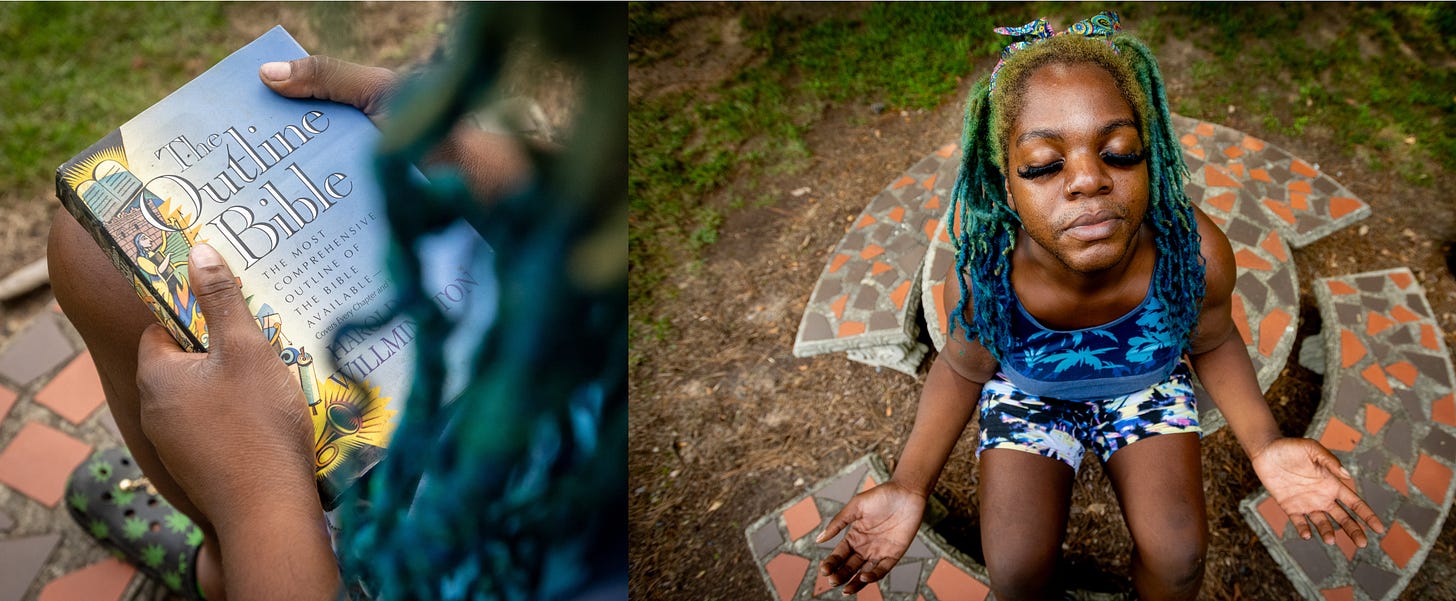

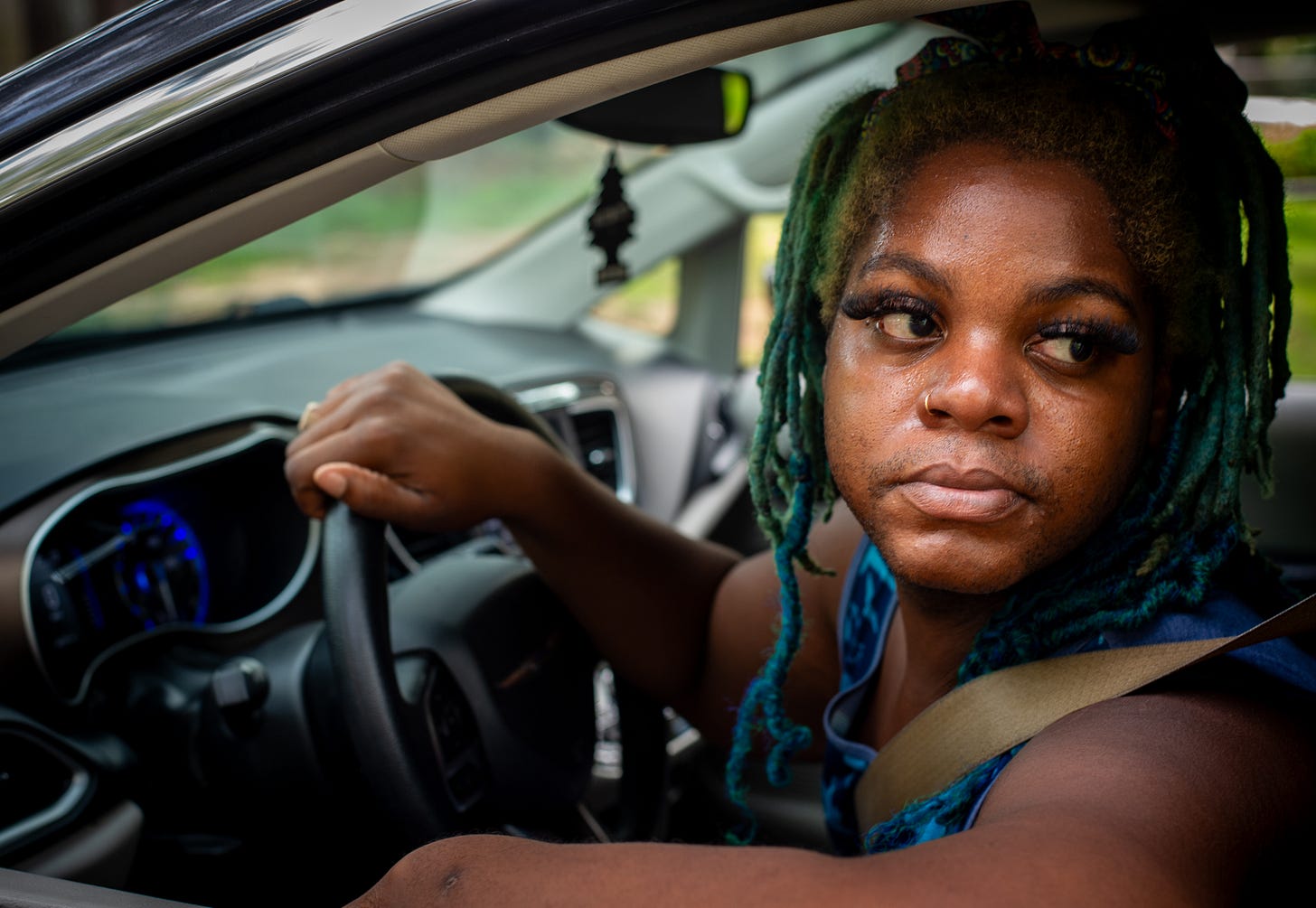

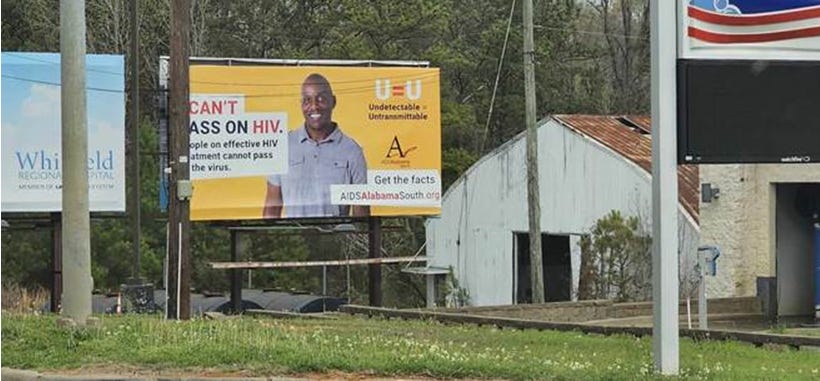
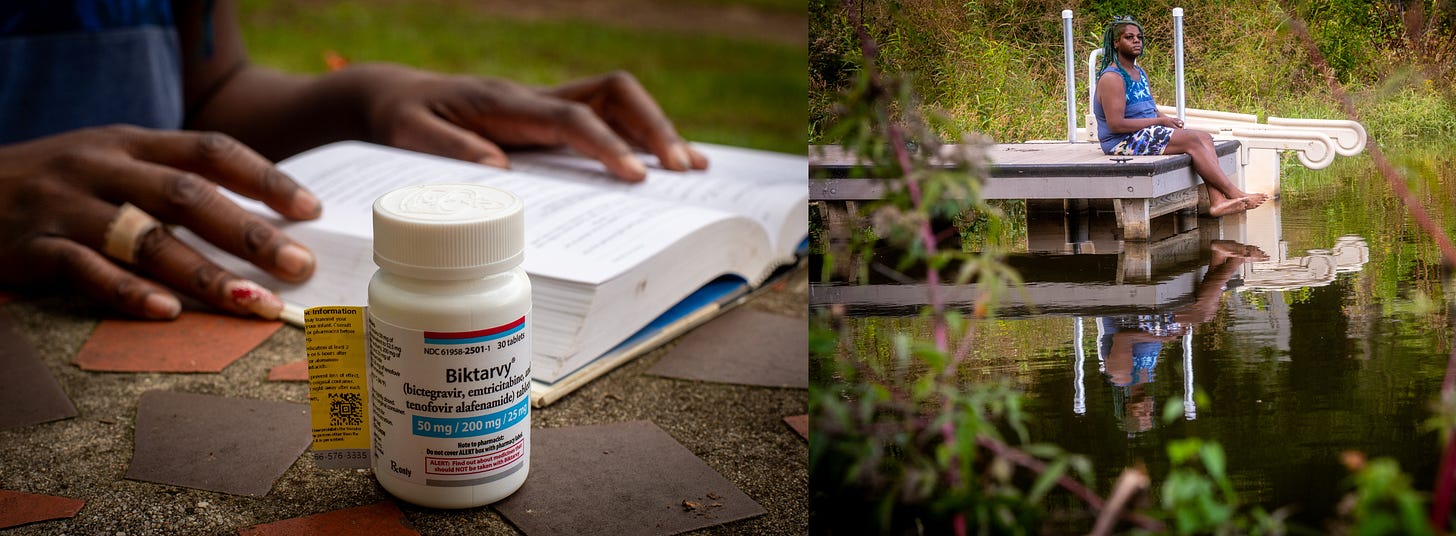
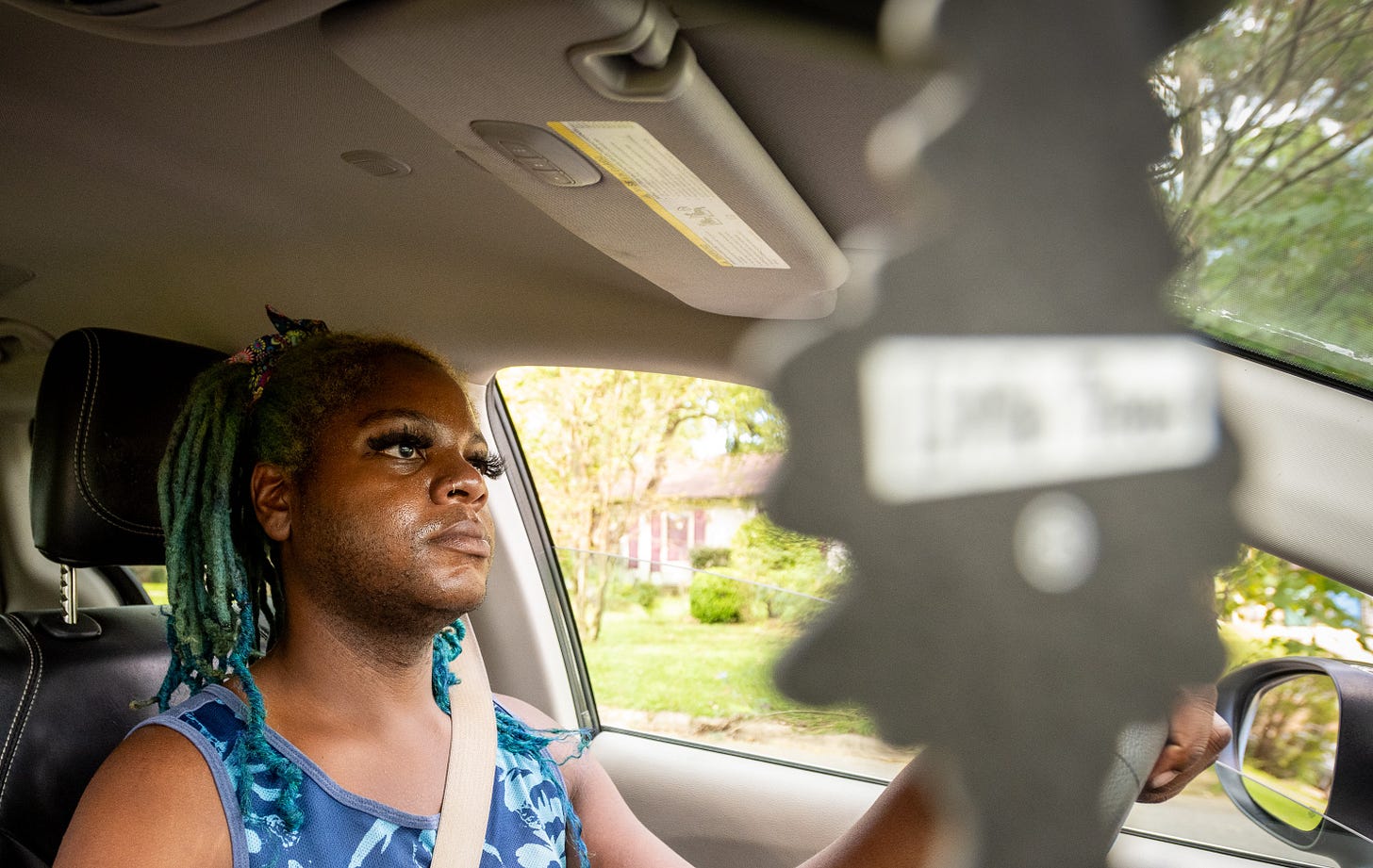
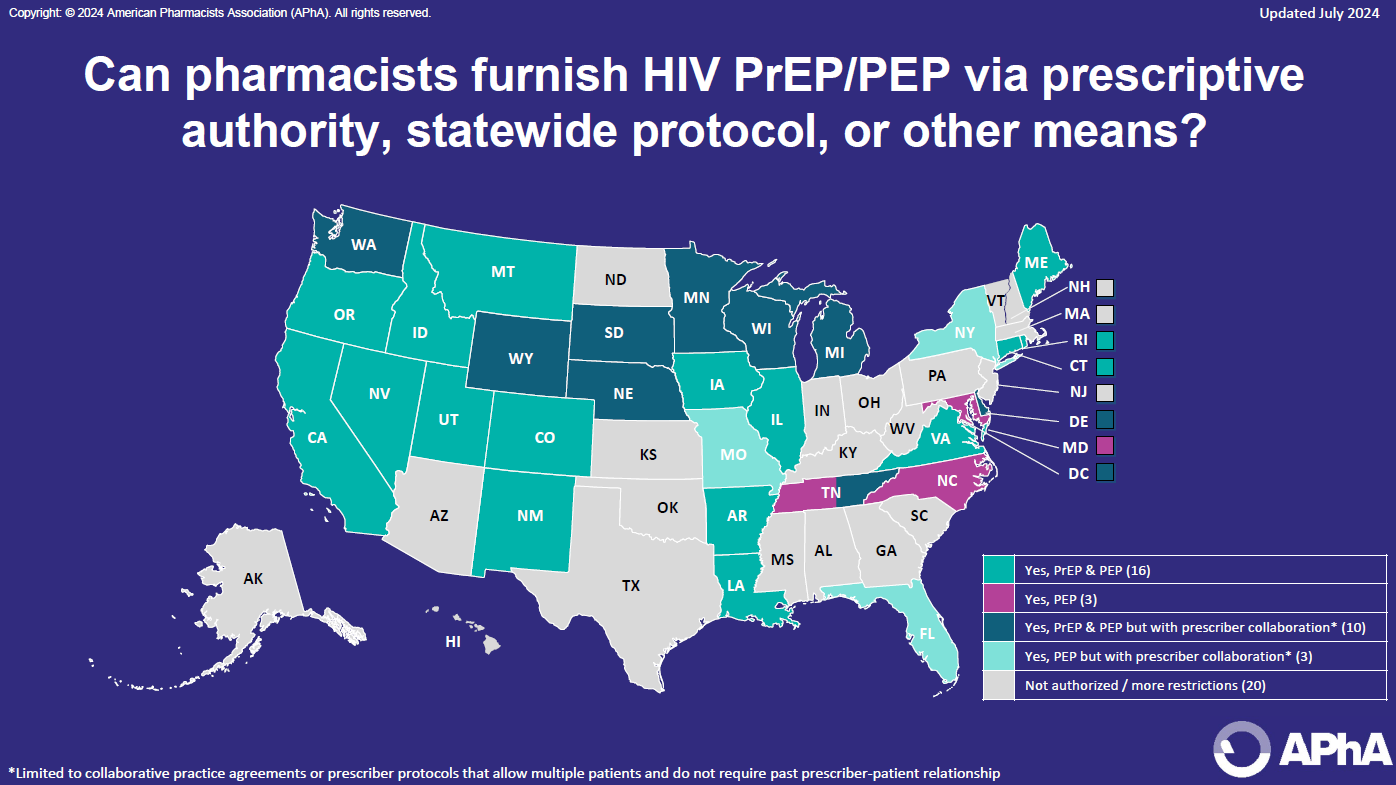



callen-lorde town hall. enter this on facebook for zoom meeting about accessing hiv care
A Night at the Garden | An American Nazi Rally in 1939 | POV
YouTube · PBS
100.8K+ views · 4 years ago